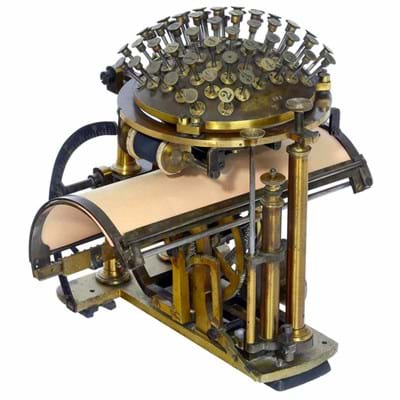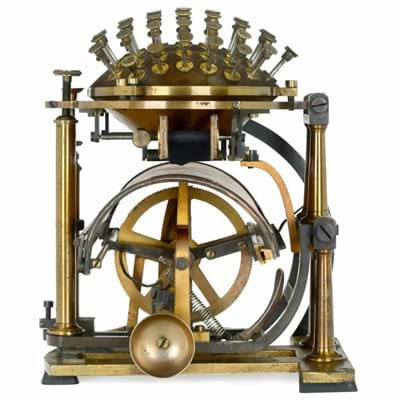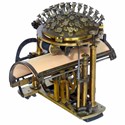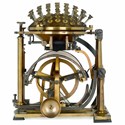After the first patent was issued to an English engineer, Henry Mill, in 1714 for “an artificial machine for impressing letters one after another… so neat and exact as not to be distinguished from print” many experimental models were built and used during the 18th and 19th century.
However, as none were produced in quantity, the first commercially produced typewriter is deemed that designed by the Danish pastor Rev Rasmus Malling-Hansen (1835-90).
Principal at the Royal Institute for the Deaf in Copenhagen, he designed his unique ergonomic typewriter in 1865 to help students to "speak with their fingers”. The system, which Malling-Hansen refined over the years, displayed all the key elements of future writing machines: automatic carriage return and line spacing, a space bar, a bell to signal the end of the line, provision for carbon paper copies, a ribbon reverse and - most significant of all - visible writing by raising the typing mechanism.
He positioned 54 keys on a hemisphere to facilitate "quick writing", the vowels operated by the fingers of the left hand, the consonants by the fingers on the right.
Malling-Hansen received numerous medals at international exhibitions for the ‘writing ball’. However, ultimately only 180 numbered models were manufactured and sold at a cost of DKr375 each across more than a decade (by contrast, more than 1000 Sholes & Glidden typewriters with its ‘Qwerty’ keyboard were made in 1874 alone). Of these only 35 are thought to survive with just five left in private hands.
Auction Team Breker in Cologne sold model number 142 for €70,000 (£63,635) in 2014. Another example, number 103, appeared for sale as part of the auction house’s Science & Technology sale on May 18. In ‘very good working original condition’, it had been a corporate gift from Bodenhoff, a manufacturer of office equipment, to a new chairman of the board. The hammer price this time was €100,000 (£87,000), plus 23% buyer’s premium.









